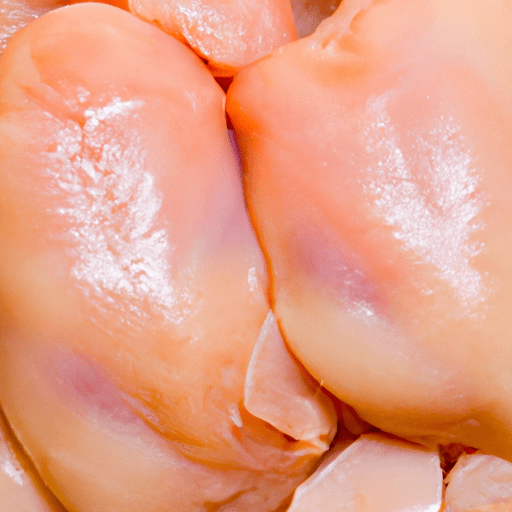All About Boneless Skin-On Chicken Breast Halves
When it comes to versatile proteins, boneless skin-on chicken breast halves take center stage in the kitchen. With their succulent taste, ease of cooking, and numerous uses in a variety of dishes, these chicken breast halves are a staple ingredient for both home cooks and professional chefs. In this blog post, we will delve into the delicious taste, common uses, nutritional value, and interesting facts about boneless skin-on chicken breast halves.
Taste and Texture
Boneless skin-on chicken breast halves are known for their delicate and mild flavor, making them perfect blank canvases for a multitude of dishes. The skin offers a slightly rich flavor, while the meat itself remains tender and moist when cooked properly. This combination of flavors and textures allows for endless possibilities when it comes to seasoning and marinating.
Common Uses in Cooking
The versatility of boneless skin-on chicken breast halves makes them a kitchen favorite. They can be used in a wide range of recipes, from comforting classics to exotic dishes. Here are some common uses in cooking:
Grilling: One of the simplest and most delicious ways to enjoy boneless skin-on chicken breast halves is by grilling them. The skin helps to seal in moisture, resulting in a juicy and flavorful chicken breast. Serve it on its own, slice it and add it to salads, or use it as a filling for sandwiches or wraps.
Pan-Seared: For a quick and tasty meal, pan-searing boneless skin-on chicken breast halves is the way to go. The crispy golden skin adds a delightful crunch, while the meat remains tender and juicy. Pair it with your favorite sides or slice it and use it in stir-fries or pasta dishes.
Baking: Baking boneless skin-on chicken breast halves yields tender, succulent meat. The skin helps to protect and keep the meat moist during the cooking process. Whether you stuff it, wrap it in bacon, or coat it with breadcrumbs, baked chicken breasts are always a hit at the dinner table.
Stuffed or Rolled: Boneless skin-on chicken breast halves are also fantastic for stuffing with a variety of fillings. From cheese and herbs to vegetables and prosciutto, the options are endless. The skin helps to hold the filling in place, creating a flavorful and impressive dish.
Nutritional Value
Boneless skin-on chicken breast halves are not only delicious but also nutritious. They are an excellent source of low-fat protein, making them a great choice for those looking to incorporate lean meat into their diet. They are also packed with essential nutrients such as vitamins B6 and B12, niacin, selenium, and phosphorus. Additionally, chicken breast halves contain fewer calories and less fat compared to other cuts of chicken, making them a healthier option.
Interesting Facts
Here are a few fascinating facts about boneless skin-on chicken breast halves:
- Chicken breasts have been a popular protein choice for centuries. They were even mentioned in medieval cookbooks, showing their enduring popularity throughout history.
- The skin on a boneless skin-on chicken breast serves a culinary purpose. It helps to retain moisture during cooking, resulting in a more tender and flavorful dish.
- Boneless skin-on chicken breast halves are highly versatile and can be used in a wide variety of cuisines, from Asian stir-fries to Mediterranean salads.
In conclusion, boneless skin-on chicken breast halves are a kitchen staple loved by many for their delicate taste, ease of cooking, and versatility. Whether grilled, pan-seared, baked, or stuffed, these chicken breasts elevate any dish they are included in. So why not stock up on boneless skin-on chicken breast halves and let your creativity run wild in the kitchen? Enjoy the delicious flavors and numerous possibilities they offer!
Boneless Skin-on Chicken Breast Halves
Origin: Boneless skin-on chicken breast halves are a popular cut of poultry that originated from domesticated chickens. Domestication of chickens is believed to have started in Southeast Asia around 6,000 years ago.
Common Uses: Boneless skin-on chicken breast halves are versatile and commonly used in a wide range of dishes. They can be grilled, roasted, pan-fried, or baked. They are frequently used as the main protein in recipes such as stir-fries, salads, sandwiches, and soups.
Nutritional Benefits: Boneless skin-on chicken breast halves can be a good source of lean protein. They are low in fat, particularly if the skin is removed before cooking. Additionally, they provide essential nutrients such as vitamin B6, vitamin B12, and minerals like selenium and phosphorus.
Unique Properties: The skin on boneless chicken breast halves helps to retain moisture during cooking, resulting in a juicier and more tender meat. It also adds flavor to the dish. The boneless cut makes it easier to handle and prepare, while the inclusion of the breasts allows for consistent thickness and portion control.
Historical Significance: While boneless skin-on chicken breast halves have become popular in recent years, chicken breasts themselves have been consumed and enjoyed for centuries. Chickens have been domesticated for thousands of years, and breast meat has always been prized for its tenderness and versatility in cooking. However, the boneless, skin-on versions of chicken breasts are more of a modern development, introduced to cater to different cooking preferences and convenience.




Use the share button below if you liked it.
It makes me smile, when I see it.